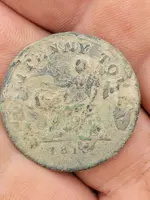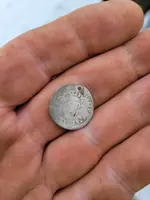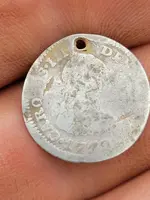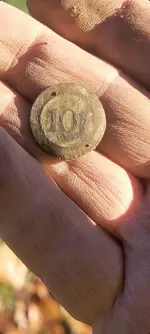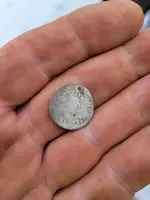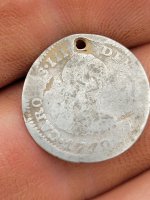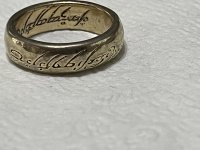RelicMedic
Bronze Member
Got out for 2 4 hour hunts recently and nabbed a few keepers. First is an 1812 officers button from the 101st regiment. Next up is an 1815 half penny and 1779 half reale. Hopefully this isn't the end!
A little history on the 101st regiment
The regiment was raised through a letter of service to Honourable Henry Augustus Dillon in 1805. Dillon had served in the Catholic Irish Brigade from 1792 to 1798. The new regiment was recruited in Ireland, and its establishment was set at 1,000 rank and file. Dillon was granted significant patronage through the letter of service, as he was permitted to nominate the officers to the unit. The officers that Dillon nominated received a promotion for joining the unit. However, gathering the officers from their previous regiments led to some delay before it was formally incorporated as part of the British Army. The regiment was added to the British Army on 25 July 1806, and the officer appointments were announced in The London Gazette on 30 August 1806. On 8 September 1806, the regiment was given the title 101st Regiment of Foot.
Although the establishment of the regiment was set at 1,000 men, when it was added to the British Army it was set at 10 companies with 76 privates each. Like many single battalion British regiments, a recruiting company was added in 1809. Initially, the regiment was stationed in Ireland, then Jersey before being sent to Nova Scotia. After two years there it was sent to Jamaica and was quartered at Spanish Town and Stony Hill. It spent the rest of the Napoleonic Wars in Jamaica until it returned to the UK in 1816 and 1817. Four companies were landed at Portsmouth on 18 June 1816 and disbanded on 24 August 1816 at Hilsea Barracks, followed by the remaining six companies which landed on 17 December 1816 and were disbanded on 7 January 1817.
A little history on the 101st regiment
The regiment was raised through a letter of service to Honourable Henry Augustus Dillon in 1805. Dillon had served in the Catholic Irish Brigade from 1792 to 1798. The new regiment was recruited in Ireland, and its establishment was set at 1,000 rank and file. Dillon was granted significant patronage through the letter of service, as he was permitted to nominate the officers to the unit. The officers that Dillon nominated received a promotion for joining the unit. However, gathering the officers from their previous regiments led to some delay before it was formally incorporated as part of the British Army. The regiment was added to the British Army on 25 July 1806, and the officer appointments were announced in The London Gazette on 30 August 1806. On 8 September 1806, the regiment was given the title 101st Regiment of Foot.
Although the establishment of the regiment was set at 1,000 men, when it was added to the British Army it was set at 10 companies with 76 privates each. Like many single battalion British regiments, a recruiting company was added in 1809. Initially, the regiment was stationed in Ireland, then Jersey before being sent to Nova Scotia. After two years there it was sent to Jamaica and was quartered at Spanish Town and Stony Hill. It spent the rest of the Napoleonic Wars in Jamaica until it returned to the UK in 1816 and 1817. Four companies were landed at Portsmouth on 18 June 1816 and disbanded on 24 August 1816 at Hilsea Barracks, followed by the remaining six companies which landed on 17 December 1816 and were disbanded on 7 January 1817.
Amazon Forum Fav 👍
Attachments
Upvote
28


